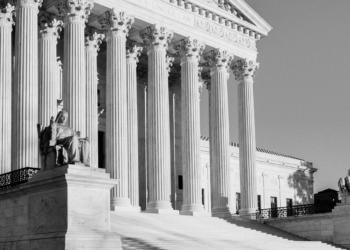In Florida, intercollegiate athletes need to protect their interests by tracking any grant of name, image, and likeness (NIL) rights for compensation as part of a group license. An athlete engaging in activity that impairs these contracts to pair multiple athletes’ NIL rights for pay is at risk.
Following is a discussion of three important issues with collective rights grants in Florida.
Florida’s NIL Environment
Any discussion on NIL rights must appreciate Florida’s NIL environment. In this environment: (1) any grant of an athlete’s NIL rights must follow state law, regulations, rules, and postsecondary educational institutional policies; (2) an athlete may enter NIL agreements if rules on fair competition, vices, and institutional business relationships are followed; and (3) there is not a players’ association or union to negotiate NIL rights on athletes’ behalf.
Group License Dangers in Florida
Similar to royalty payments for the music industry, the nature of college athletics suggests group licenses will be a headache and value creator.
Headaches include whether: (1) an institution is unduly restricting an athlete’s NIL rights; (2) an athlete, NIL compensator, or another person will be institutionally punished for nondisclosure of an NIL agreement; (3) a person is an institutional affiliate; (4) an institution has a collective grant of NIL rights from participating athletes; (5) disparate treatment and outcomes for NIL rights grants concerning women and men will lead to Title IX violations; (6) a grant of rights to an entity that co-brands athlete NIL with intellectual property of an institution, conference, association, bowl game, or tournament becomes an inducement or “pay for play”; (7) an athlete may grant their NIL rights to third parties like a bowl game, tournament, or championship series; (8) an athlete is a participant in an athletic program after an institutional disciplinary proceeding; (9) an athlete knowingly or unknowingly grants the same exclusive rights to multiple entities; (10) an athlete remains subject to an institutional group license upon entry into the transfer portal; and (11) federal legislation will preempt aspects of Florida’s NIL statute applicable to group licenses.
Tracking an Athlete’s Grant of NIL Rights
An athlete should consider limited, rather than blanket, grants of their NIL rights. Group licensing programs are available to student athletes participating at the University of Florida, University of Texas, and with the PAC-12 Networks. The PAC-12 Networks permits joining “an athlete’s newly granted NIL rights with school IP, including official branding, trademarks and logos, which can’t be used in individual NIL deals.”
At Texas, joining a group licensing program may be with (a) at least three or more athletes from the same team or (b) with at least six student athletes across various sports. Likewise, at Florida, participation in a group rights program is permissive, not mandatory, and does not limit the athlete’s individual NIL rights. For example, it would not be farfetched to expect a product pairing an athlete’s highlight coupled with a Florida Gators logo.
Athlete education is integral to ensure they know of their valuable NIL rights and their permissible uses. Any educational program for athletes necessarily should focus on explaining why and how to identify and track NIL rights.
NIL rights tracking should include: (1) identification of the specific rights granted, a potential conflict based on a grant of rights, a conflict between an individual and collective grant of NIL rights, and promises made by an NIL compensator; (2) identification of entities that relate to a collective grant of NIL rights like institutions, conferences, conference networks, associations, and/or an entity contracting with or affiliated to the foregoing; (3) the adequacy of content distribution systems containing an athlete’s NIL rights; (4) the development and effectiveness of group licensing programs launched in collaboration with athletic departments; (5) a relative comparison of physical and digital product sales containing an athlete’s NIL; and (6) monitoring for infringement of NIL rights with appropriate technical expertise dependent upon the licensed product.
Ultimately, athletes need to be educated on the dangers of being too loose with identifying, asserting, granting, and tracking granted NIL rights during this nascent NIL era and should engage an attorney.








